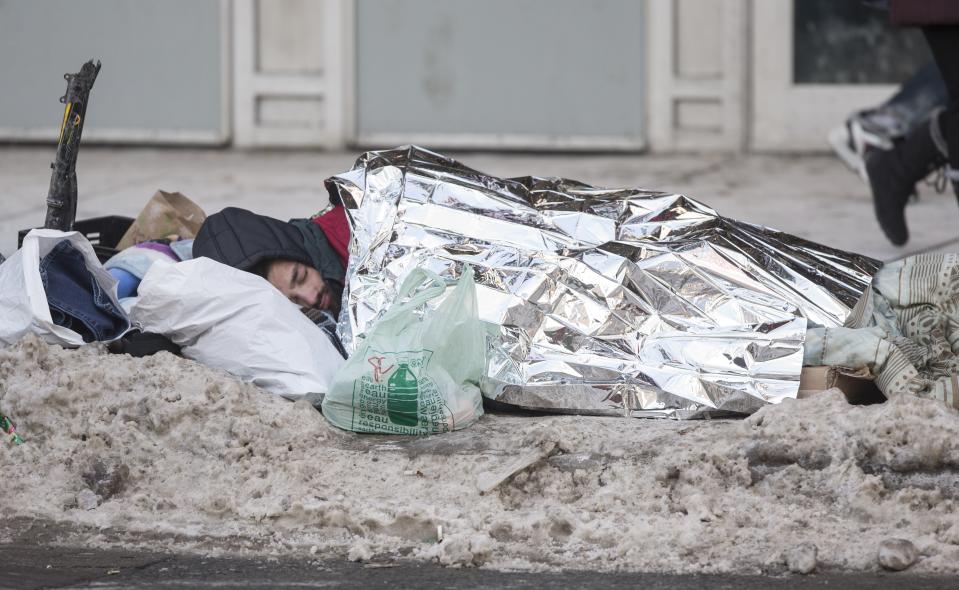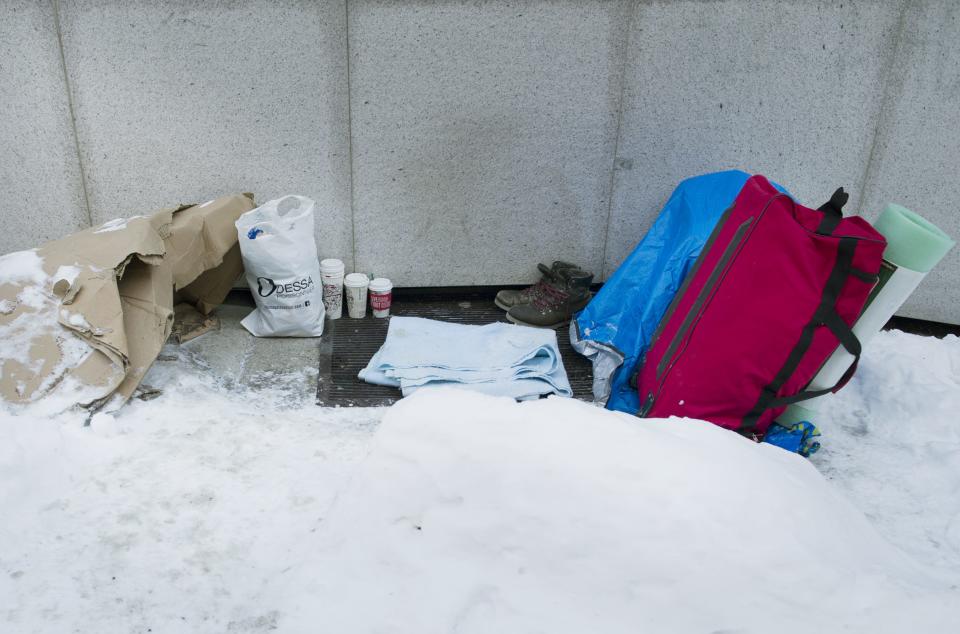Canada's homeless shelters struggle to cope with extreme cold weather

Canadians are feeling the deep freeze this winter, trying to stay inside and keep warm, but no one is feeling the pressure more than homeless shelters during this cold spell.
With occupancy consistently reaching or exceeding 100 per cent, shelters are trying to keep up with the need to get people off the streets as we wait for some relief from these frigid temperatures.
“People who may not have gone to a shelter are now, they just can’t survive,” said Jane Truemner, director of communications and capital fundraising with Fred Victor, a charitable organization that operates several shelter, affordable and transitional housing locations in Toronto, told Yahoo Canada News.

Toronto’s emergency shelters
In Toronto in particular, shelters and the city officials have been dealing with the crisis of trying to open winter respite sites as quickly as possible.
“It’s the level of care that we can give, you don’t want people sitting on the floor, it’s a tough one for us,” Truemner said. ”As much as we run our programs and we fundraise…we’re mandated really by the money that we’re given per bed for people.”
On Wednesday, Mayor John Tory announced that he is looking into opening the Moss Park armoury for 24-hour winter respite for up to 100 beds until April 15. This follows significant criticism Tory faced for refusing to open armouries to the homeless when shelters initially approached capacity last year but has since received support from local city shelters.
“We support the request that the mayor has made,” said Bruce Rivers, the executive director at the Toronto-based, youth-focused shelter Covenant House. “I think that the Moss Park option is a very viable one, it makes sense, particularly given its location and the size.”
The Government of Canada has accepted the request from Toronto and Ontario to temporarily make the Moss Park Armoury available as a 24/7 respite centre for 2 weeks. We’re all working together to keep people safe from the cold.
— Ralph Goodale (@RalphGoodale) January 5, 2018
On Friday, the federal government accepted the city’s request to open the Moss park armoury, which will be available seven days a week for two weeks.
According to Truemner, the shelter receives funding each year based on an estimation of occupancy and resources needed from years past. She identifies that when there’s a significant increase in individuals coming to shelters that was not previously predicted, the bed and resources required exceeds what is provided.

Covenant House regularly reaches capacity by 2:00p.m. each day but more recently, the shelter has had to redirect 10 to 15 young people a day to other resources within the city. Covenant House works with the city officials and uses a computer database to find where bed availability exists within the city. They also have a drop-in centre where they see upwards of 100 youths who need a meal, shower, or require the assistance of a counselor or nurse.
“It’s cold out and nasty. We do everything that we can to hold on to the young person to make sure that we can get them to a place that’s safe and warm,” Rivers said.
Although he supports the city’s effort to open additional winter respite sites, Rivers does identify that a longterm solution in the city is imperative and needs to be established with federal, provincial and the municipal levels of government.
“The long-term solution is not creating more shelter beds. I really believe that we need to tackle the longer term solution of an affordable housing solution in Toronto more broadly,” Rivers said. “We have a finite number of shelter beds but if we could move youth out of those beds into more permanent, stable housing options, that would allow us to bring new youth in.”
Widespread problem
The stress on shelters expands past Toronto as well. The Ottawa Mission in the nation’s capital is also feeling the strain from these unprecedented cold temperatures. Peter Tilley, executive director of the mission says occupancy has been consistently over 100 per cent since the polar vortex came through the region.
“We’re doing what we can to cope with this cold snap,” Tilley said. “We’ve been putting upwards of 20 mats per night down on the chapel room floor, which has been putting us over 250 people staying here when we’re normally at around 225-230.”
Frontline staff have been making regular rounds around Ottawa streets to get people to come inside. Tilley says that most people who stay with them enjoy getting out of the shelter environment, so encouraging individuals to stay indoors and coming with actives to keep them occupied is also a challenge. Particularly during the long stretch of cold weather that has hit the Ottawa region.

Impacting comprehensive care
Aside from purely finding a space for people to stay, sleep, and have a meal, the high occupancy at shelters has also impacted the staff’s ability to help homeless individuals with any mental health issues.
At The Ottawa Mission, counselors usually interview individuals within 72 hours once they book into the shelter, so staff can be aware of and provide support for people with addiction, anxiety, depression or other mental health issues. With such a large number of people to process this winter who are confined to a small space, these regular processes can be compromised. Tilley says the situation can be “overwhelming” for individuals at the shelter.
“The other piece for us is to…keep people in a good state when they’re confined to that tight space,” Tilley said. “We’ve got a bunch of people all crowded within an area for extended periods of time, and that can lead to escalation of arguments and situations where our frontline staff have had to intervene on several occasions.”
A shelter’s ability to utilize mental health services is also compromised at Fred Victor, which partnered with Community Resource Connections of Toronto (CRCT) in 2015 to create several programs and services focused on helping homeless individuals who suffer from mental health issues.
“Of course, when you have more people, we have the same number of staff, you’re going got be affected by that,” Truemner said. “You’re not going to be able to work with everybody the same way that you would have.”
These supplementary programs and initiatives have been very important for shelters that work to ultimately get individuals off the streets.
“That multi-pronged approach is absolutely critical,” Rivers said. “Everyone’s unique. Coming up with a plan that combines those kinds of feature is very, very powerful and our experience is when a young person’s provided with that kind of support, they can and will move forward with their lives.”
While the temperatures continue to stay in the extreme low negatives, shelters across much of Canada will continue to provide space for as many homeless individuals as they can accommodate.
“Cold weather can be disheartening for most of us Canadians let alone someone who’s staying at a homeless shelter,” Tilley said.

